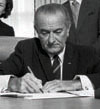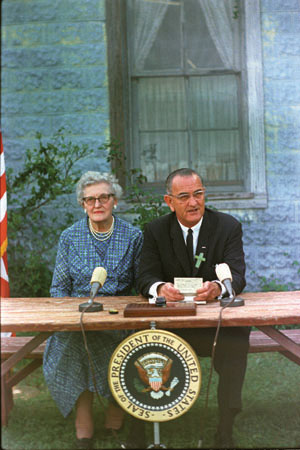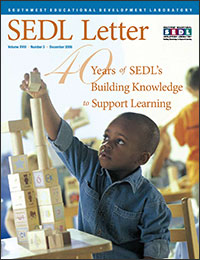40 Years of Commitment to Quality Learning for All
 “By passing this bill, we bridge the gap between helplessness and hope for more than 5 million educationally deprived children. . . . I believe deeply no law I have signed or will ever sign means more to the future of America.”
“By passing this bill, we bridge the gap between helplessness and hope for more than 5 million educationally deprived children. . . . I believe deeply no law I have signed or will ever sign means more to the future of America.”
— President Lyndon B. Johnson
With these words, President Lyndon B. Johnson signed the Elementary and Secondary Education Act (ESEA) into law. It was Palm Sunday, 1965.

Part of President Johnson’s War on Poverty, the ESEA allocated $1 billion annually to schools serving low-income children. Those who crafted the ESEA envisioned a network of institutions that would bridge the gap between research and practice, developing and disseminating research-based solutions to the nation’s most urgent education problems. The following year, 20 regional educational laboratories were established to meet that goal. The Southwest Educational Development Laboratory (SEDL) opened its doors in a one-room office "with four chairs and five employees," according to one staff member. Forty years later, with plans to build a new 50,000-square-foot facility in Austin, SEDL continues to thrive.
Although from the beginning SEDL’s work extended well beyond the bounds of the regional laboratory, that program is indelibly imprinted on SEDL’s institutional history and culture. The ESEA has been even more of an influence on the organization, with each reauthorization bringing new approaches and philosophies to tackle educational challenges. Our work has evolved over the past 4 decades to meet changing times and needs, but our focus on linking research to practice and our dedication to ensuring a quality education for all learners—particularly those historically least served by our nation’s educational system—endure, a direct result of President Johnson’s vision for a Great Society.
Next Article: The 1960s: SEDL's Formative Years

